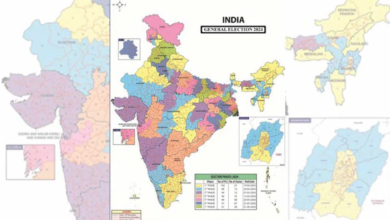Editorial: Preventing future Joshimaths

Human activities in the fragile Himalayan region need a deep scientific understanding.

Hyderabad: The reports of land subsidence in Doda district of Jammu & Kashmir are eerily similar to the ones that shook Uttarakhand’s Joshimath recently, raising concerns over environmental degradation in the fragile Himalayan region. Hundreds of residents in Doda have been evacuated after deep cracks appeared across several structures and the collapse of some buildings. The sinking foundations have sparked panic in the region. Deforestation and unbridled construction activity are playing havoc with the fragile ecosystem. Experts have been raising questions about the relevance of hydropower projects in the Himalayan region. Large-scale hydroelectric dams impact local ecosystems and communities — they displace people and result in loss of habitat for fish and other wildlife. The building and maintenance of large hydroelectric dams can also have a significant environmental impact. They can disrupt the flow of rivers, leading to changes in water temperature and chemistry. It can also cause erosion, landslides, and sedimentation with a negative impact on the local environment. The geology of the Himalayas is complex, diverse and risk-prone. Joshimath, a spiritual doorway to the holy shrines in the Himalayas, was in the news recently because of the severe damage that land subsidence has caused, with over 700 buildings vulnerable to collapse. Mere band-aid solutions will not prevent Joshimath-type crises in future. A new classification of land based on geological realities and people’s needs must be evolved. Some of the existing projects and investments driving growth in the Himalayas must be set aside. Human activities in the fragile region need a deep scientific understanding.
After the 1999 Chamoli earthquake, the Geological Survey of India (GSI) identified vulnerable settlements and sites in the Himalayan region and even appealed to the government to identify stable locations for resettlement. However, successive governments did not bother. With growing pilgrimage and tourist inflow into the region, construction became even more haphazard and risky. Mapping a diverse range of vulnerabilities on the ground across the Himalayas at a micro level could be the first step to finding a long-term solution. Micro hydropower generating systems can be developed as an alternative to large hydroelectric projects. These are typically less expensive to build and maintain than large hydroelectric dams and have a smaller environmental footprint. They can be located even in inaccessible areas where it is difficult to transmit electricity from larger power stations, and they can provide a reliable source of energy to communities that are not connected to the grid. The crisis in Joshimath comes as a grim reminder of how successive governments messed up with the environment to an extent that it has become irreversible now. Land subsidence in the region must be declared a national calamity and all developmental projects be halted till a report by experts and environmentalists is submitted on the issue.







